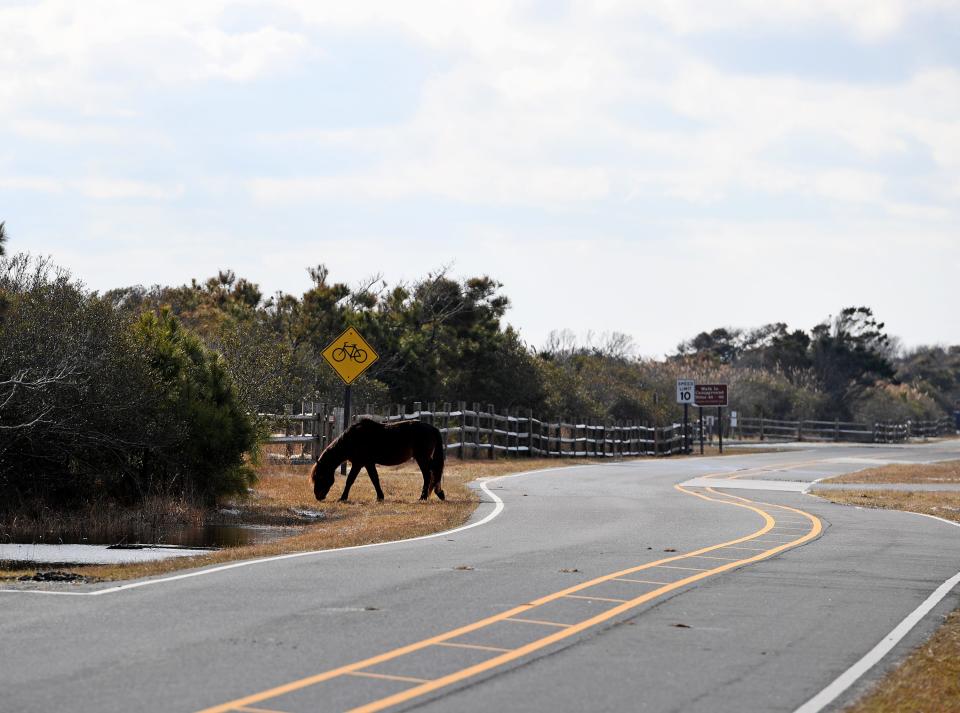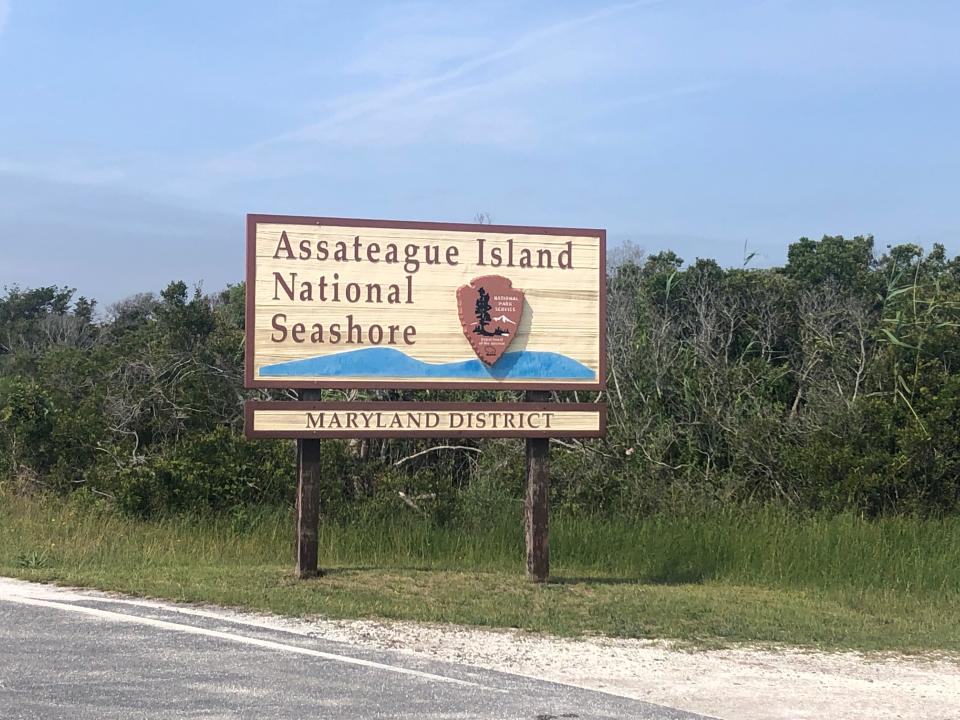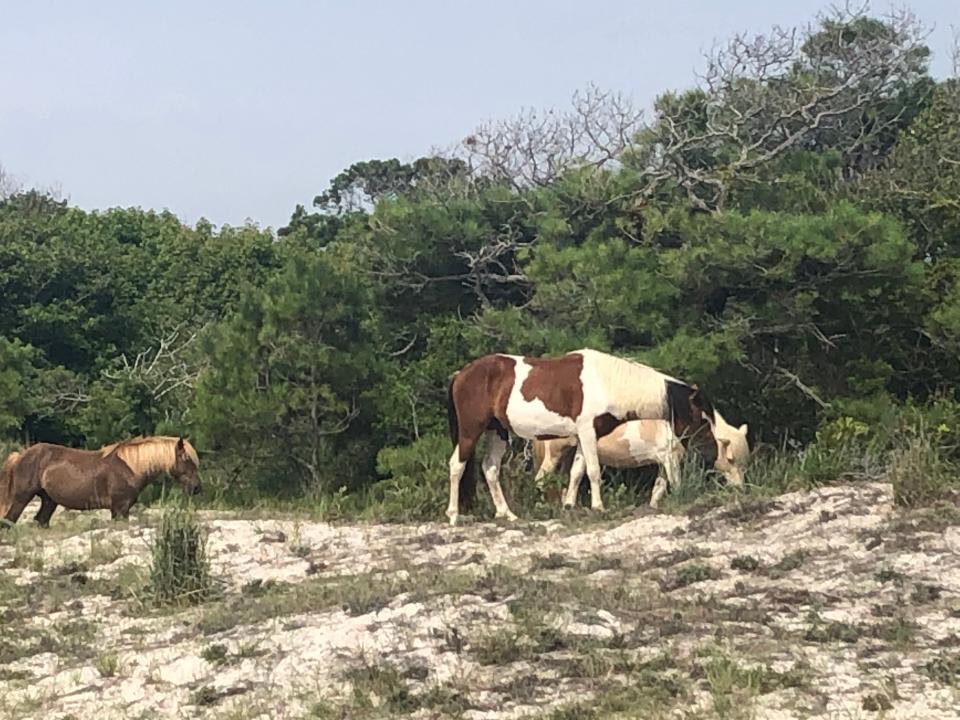Visiting Assateague? Everything to know for summer 2022, including prices and more
Two things sure to rise as summer sets in is the temperature and the visitor numbers at Assateague Island National Seashore, with the ecosystem feeling the brunt.
Record numbers just a year ago topped 2,662,716 visitors to its Maryland and Virginia portions.
That placed the park 33rd among the 380 National Park Units reporting visitation numbers, and ahead of such iconic locations as Mount Rushmore, Bryce Canyon and Shenandoah.
That went along with the reported 17.1 million that visited all of Maryland's state parks in 2020, which broke the previous record set in 2019 of 14.9 million, as reported by the state.

More on horses being moved: 'Aggressive' Assateague Island horse permanently relocated to Texas sanctuary
More on park attendance: As new summer approaches, Assateague Island announces record-shattering 2021 attendance
Fees and passes
Entering the park either on the Maryland or Virginia locations starts with having photo identification ready and knowing the duration of your visit. Different types of visits have individual rates.
For Maryland, that includes:
Foot/Bicycle: No Fee
Vehicle: $25 - 7 Days
Vehicle: $45 - Park Annual Pass, valid 1 year from purchase
Motorcycle: $20 - 7 Days
Individual: $15 - 7 Days (per person 16 years of age or older when entering by means other than a private, non-commercial vehicle, such as taxis and limousines providing transportation only; buses carrying passengers not on a pre-packaged tour, such as school groups visiting for recreational purposes; and buses or vans registered to nonprofit organizations such as churches or schools. A family traveling together shall pay no more than the vehicle fee.)
Beach Parking fee upgrade: $20. - For visitors using the USFWS Migratory Waterfowl Duck Stamp as an entrance pass, valid July 1 to June 30 annually.

In Virginia, fees and passes are:
Foot/Bicycle: No fee
Vehicle: $10 - 1 Day
Vehicle: $25 - 7 Days
Vehicle: $45 - Refuge Annual Pass, valid 1 year from purchase.
Vehicle: $45 - USFWS Migratory Waterfowl Duck Stamp ($25) plus beach parking fee ($20)
Beach Parking fee upgrade: $20 - For visitors using the USFWS Migratory Waterfowl Duck Stamp as an entrance pass, valid July 1 to June 30 annually.
To avoid lines to enter the Maryland vehicle area that can last three to four hours, arrive early early or late, and expect higher than usual traffic during holiday weekends and those with warm beach weather.
Animal attraction

While the most famous permanent residents of the park are the wild horses, it is also home to an impressive ecosystem of mammals, amphibians, reptiles, birds, insects, mollusks and fish.
According to the U.S. Geological Survey, the horses "have been on Assateague for hundreds of years. They have withstood hurricanes and Nor’easters, and adapted to eat salt marsh grasses."
The public is reminded that the horses can bite, kick or damage your vehicle. Always keep at least 40 feet from the horses, and never try to feed or attract them.
As with any other state or national park with wild animals, storing food properly will keep from enticing them from entering into your recreational area.
The same rule on giving animals space applies to other wildlife.
More: A to Z guide to Eastern Shore lingo. Talk like a local on your Ocean City vacation
More: What's new at the Ocean City beach for summer 2022: Restaurants, brewery
"A variety of snakes, toads and frogs rely on the freshwater ponds in the center of the island. Assateague is also home to five different types of freshwater turtles and three species of sea turtles. Northern Diamondback Terrapin are likely to be found in the salt marshes and Loggerhead sea turtle nests can sometimes be found along the beach," according to the geological survey in a park overview.
The variety of types of environments, be it beaches, saltwater marshes, seagrass plains or freshwater locations, must not be disturbed.
Environmental impact
The National Parks Service noted that the park exists to balance the public use and preservation of a number of ecosystems and habitats.
"As a barrier island adjacent to densely populated resort communities, Assateague is affected by of a wide range of natural and human forces," said the service. "The weather, biota and human visitors of the island all exert their influences on the physical and biological character of this unique and dynamic park."
As with any seashore, the constant movement of tides and sand reshapes the area and has lasting effects.

Ocean currents, storm events and seasonal weather patterns all leave their mark on the shoreline. According to the department, long shore currents cause sand to move along the coast from north to south, while overwash events push the island toward the mainland.
"Manmade structures such as jetties built to the north of the island, in turn, alter these natural processes by inhibiting sediment transport," said the service.
This article originally appeared on Salisbury Daily Times: Everything to know for visiting Assateague in summer, including fees
